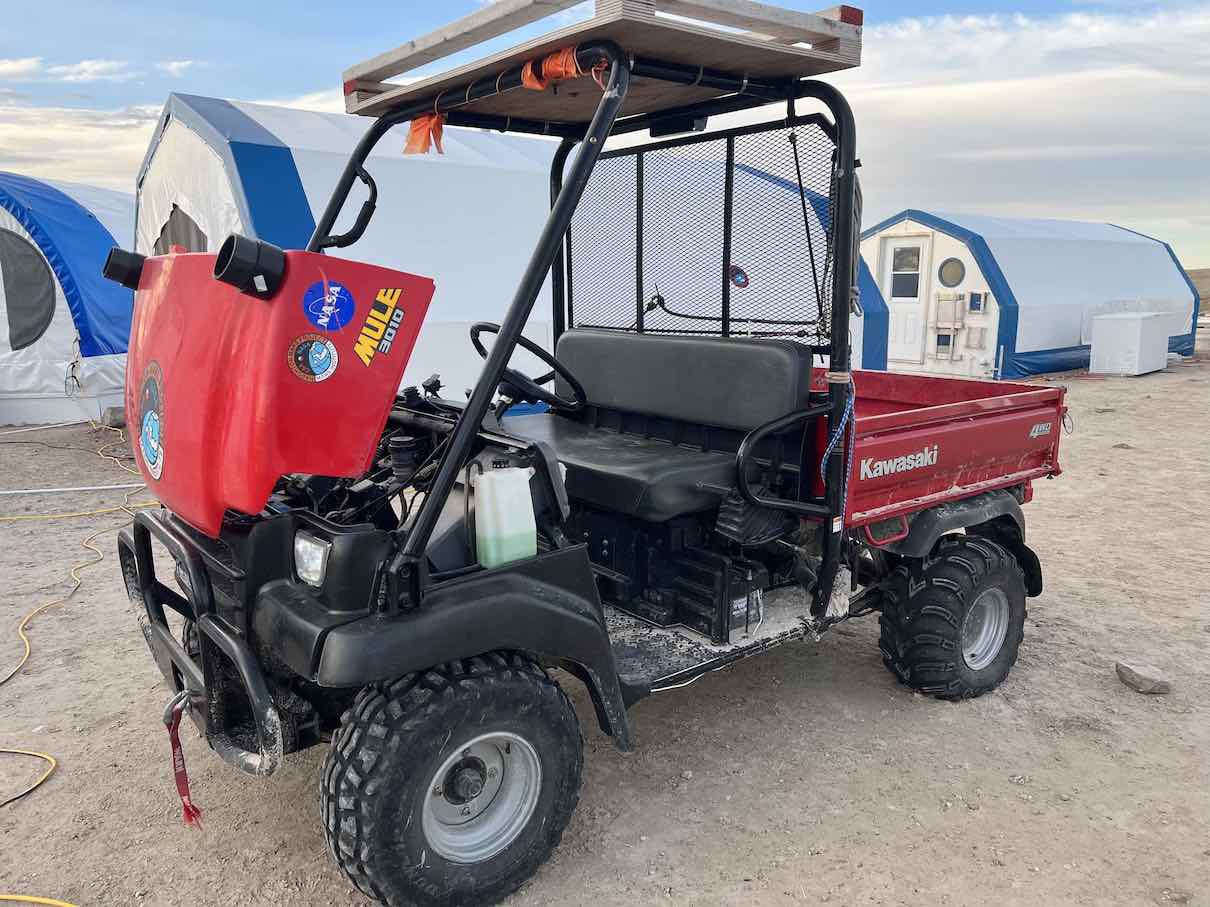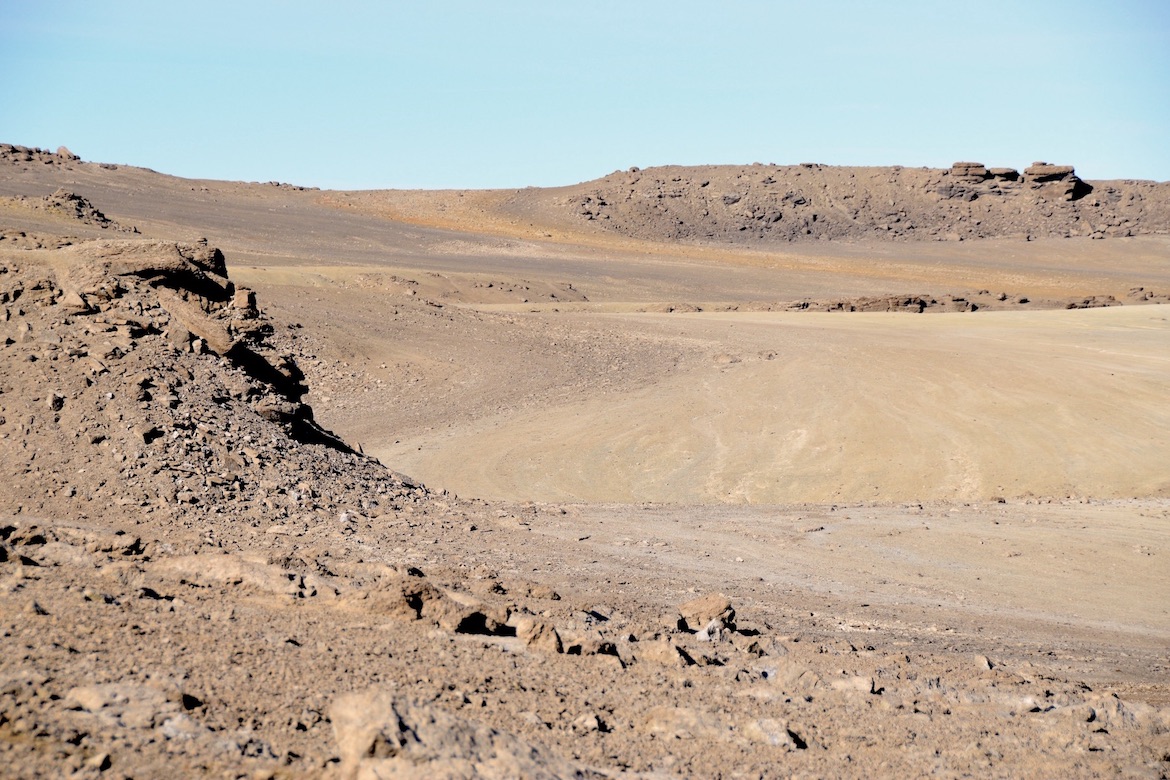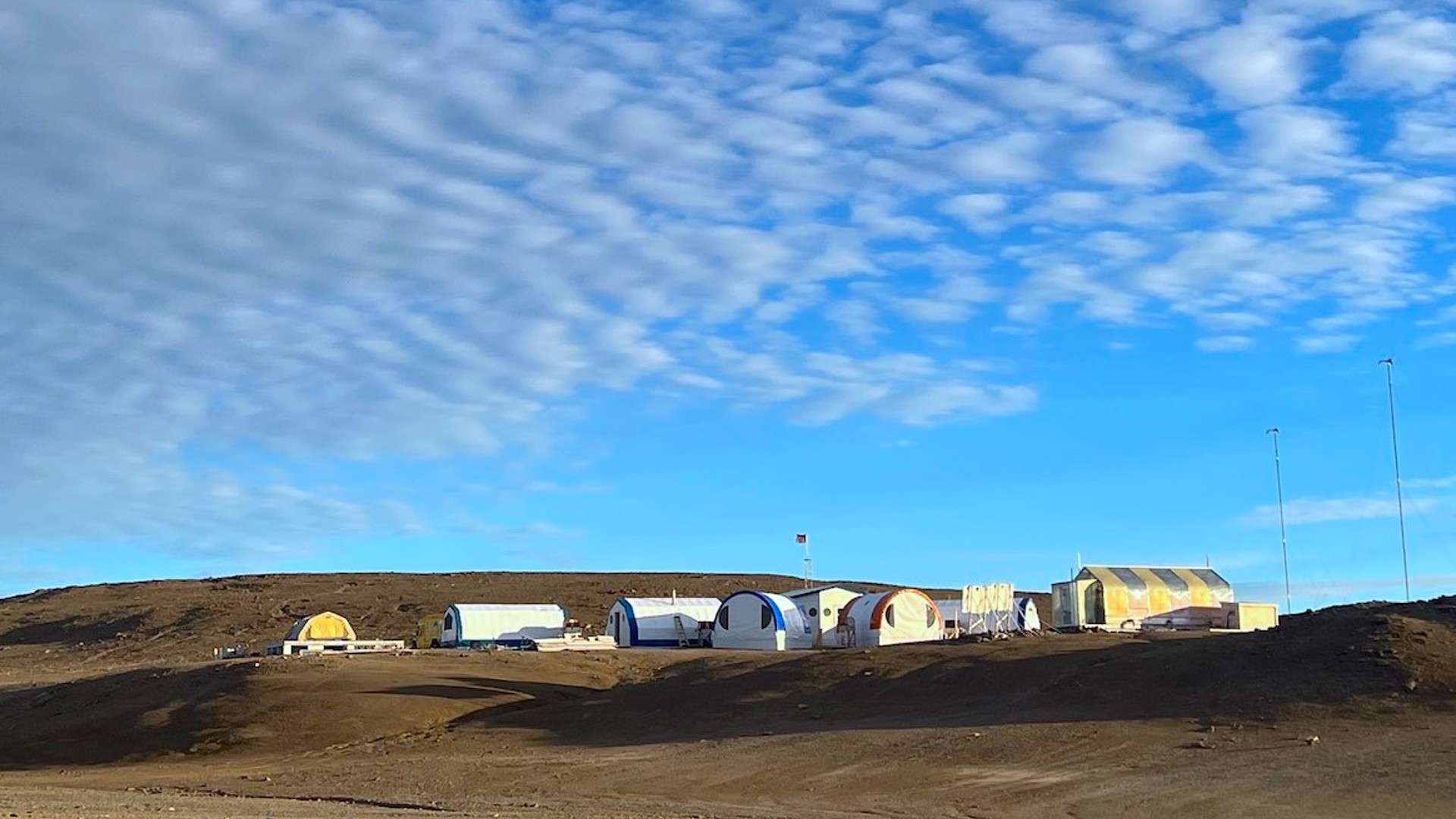It was a frustrating morning.
Yesterday afternoon, Pascal Lee and I drove the most utilitarian of Haughton-Mars Project’s (HMP) seven all-terrain vehicles (ATVs) over to the site where the team from the Haystack Observatory is setting up their enormous wire mesh rig for their experiment.
On the way back to the simulated Mars base, I noticed a red indicator light — unlabeled — on the dash of the side-by-side ATV called “the Mule.” The warning light icon looked like a beaker filled with scallops; I eventually surmised it was a coolant temperature gauge. Then we smelled hot coolant and knew we had to stop to allow it to cool down (even in near-polar temperatures, vehicles can overheat).
Related: A month on ‘Mars’: Preparing to visit the Red Planet … on Earth
Rod Pyle is a space historian and author who has created and offered executive leadership and innovation training at NASA’s Johnson Space Center. Rod has received endorsements and recognition from the outgoing Deputy Director of NASA, Johnson Space Center’s Chief Knowledge Officer for his work.
This morning John Schutt and I pulled the covers off the Mule’s mechanical bits to try to ascertain what might be awry. Like an actual mule, it was uncooperative, and the more we dug into the problem, the more vexing it became. Filled with coolant, but not circulating. I fetched the universal tool, and a few hammer taps to the thermostat later, coolant was flowing, but not enough of it, and the fan was still not switching on. And so forth. As I’ve mentioned, John has a long history of solving problems in polar environments that would cause most of us to give up and weep, and I spent much of my youth nursing recalcitrant and elderly British sports cars back to life. But between us, we could not find a culprit for this problem.
As we stood side by side staring at the mechanically simple troublemaker, it occurred to me just how being in an environment such as this magnifies what would normally be small problems. Were I at home in Southern California, I would look up “Mule Cooling Issues” on Reddit or YouTube, and the benefit of dozens, if not hundreds, of like-minded folks would likely solve the problem. A quick trip to the dealer to fetch parts, some wrenching, and problem solved. But with very limited internet browser access, and the nearest supplier of ATV parts many hundreds of miles (and thousands of flight dollars) away — not to mention no nearby expert mechanics — your prime utility vehicle is now as useful as a lawn gnome. We’ll figure it out, but it will be a chore.

(opens in new tab)
As John and I decided to step away from the project for now (maybe it will heal itself?), I decided to go for a hike to get a better look at the magical terrain that surrounds the HMP base. Standing in front of the main building, the Core, the 360-degree view is roughly half hills and half plains, with multiple interesting features carved here and there. I set off roughly south/southwest to climb through a saddle between two hills. Like on the moon, the terrain is so similar in color and hue, and so unfamiliar in aspect to a city boy like myself, distances can be quite deceiving. In this case, the area I hiked was much closer than it looked — a nicer outcome than the opposite.

(opens in new tab)
Once I crested the saddle, which I was told was likely the result of glacial meltwater erosion at the end of the last Ice Age, I could see a long, sinuous valley beyond, with jagged (and very sharp) rocks tossed around by the torrential processes that formed it. It’s hard to get a sense of scale, since (again, as the Apollo astronauts experienced on moonwalks), there are no familiar visual reference points — just red rocks and soil below the horizon, and blue, cloudless skies above. It’s visually spectacular while challenging your dimensional senses.
GET CAUGHT UP WITH A MONTH ON ‘MARS’:
After long contemplation, and the realization that this is about as alone as I’ve ever been, I hiked east to the top of a bluff. At the top, the view opened up to an incredible 180-degree view of multiple valleys, bluffs, and the meandering trickle of a snowmelt stream—the stream gave the visual a bit more of a scale reference, easing my slight headache. To the east the Mars Society’s single habitat simulator, once part of the HMP, could be seen, though it’s unattended this year.

(opens in new tab)
I turned back to the north to return to HMP. While chilly, the morning fog had burned off and the sky was a bowl of glorious cornflower blue. A stiff breeze continued to blow across the rocky promontory, and as I walked a bit further the base came into view. Gabriel Dubé, our drone pilot, and Pascal were headed over to the Humvee to test launching and flying a drone from a rover platform, and Pascal’s dog, Apollo, trotted along behind them.
After a couple of hours in unfamiliar terrain, so very unearthly and foreign to me, the sight of home base was a welcome one. Awaiting me was lunch, some writing time, and, of course, the problem Mule … as stubborn as its namesake.
Follow us on Twitter @Spacedotcom (opens in new tab) or on Facebook (opens in new tab).

